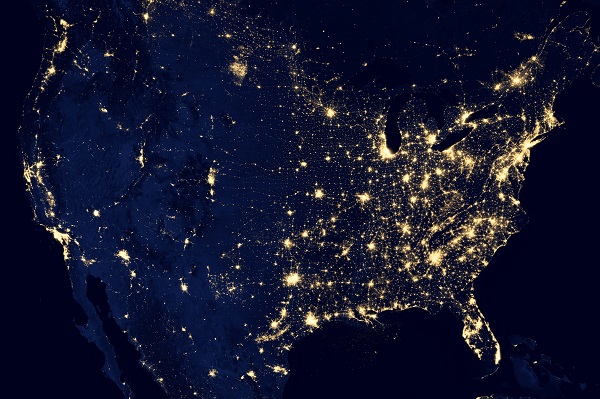Business
CBC staff with six figure salaries balloons under Trudeau government

From the Canadian Taxpayers Federation
Author: Ryan Thorpe
The number of Canadian Broadcasting Corporation staff taking home a six-figure annual salary has soared by 231 per cent under Prime Minister Justin Trudeau.
Last year, 1,450 CBC staff took home more than $100,000 in base salary, according to access-to-information records obtained by the Canadian Taxpayers Federation.
That’s a 231 per cent increase over 2015, when just 438 CBC employees took home a six-figure annual salary.
Six-figure salaries at the state broadcaster cost taxpayers more than $181 million last year, for an average of $125,000 for those employees.
“The CBC has been raking in big paycheques and bonuses while the taxpayers footing the bills have been struggling,” said Franco Terrazzano, CTF Federal Director. “Is anyone in government going to step in, stick up for taxpayers and put an end to the CBC gravy train?”
The CBC also dished out more than $11.5 million in pay raises last year to 87 per cent of its workforce, according to separate access-to-information records.
No CBC employee received a pay cut in 2023.
All told, raises at the CBC total $97 million since 2015.
This week, the Canadian Press reported the CBC paid out $18.4 million in bonuses in 2024, after it eliminated hundreds of jobs.
That included $3.3 million in bonuses for 45 executives, for an average of $73,000 each – more than the average salary for Canadian workers, according to Statistics Canada.
The bonuses also included $10.4 million paid out to 631 managers and $4.6 million for 518 other employees.
Bonuses at the CBC now total $132 million since 2015. Combined, raises and bonuses at the CBC total more than $229 million and counting since 2015.
“It’s time to end these taxpayer-funded bonuses and defund the CBC,” Terrazzano said.
|
Year |
Raise |
Bonus |
Combined Cost |
|
2015 |
$7,958,060 |
$8,254,599 |
$16,212,569 |
|
2016 |
$8,187,668 |
$8,097,155 |
$16,284,823 |
|
2017 |
$10,134,964 |
$8,903,882 |
$19,038,846 |
|
2018 |
$14,544,563 |
$13,337,262 |
$27,881,825 |
|
2019 |
$11,048,543 |
$14,257,933 |
$25,306,476 |
|
2020 |
$11,989,307 |
$15,013,838 |
$27,003,145 |
|
2021 |
$9,218,379 |
$15,398,101 |
$24,616,480 |
|
2022 |
$12,505,938 |
$16,052,148 |
$28,558,086 |
|
2023 |
$11,528,793 |
$14,902,755 |
$26,431,548 |
|
2024 |
N/A |
$18,400,000 |
$18,400,000 |
|
Total |
$97,116,215 |
$132,617,673 |
$229,733,888 |
The CBC News Network’s share of the national prime-time viewing audience is 2.1 per cent, according to its latest third-quarter report.
Put another way, 97.9 per cent of TV-viewing Canadians choose not to watch CBC’s English language prime-time news program.
Nevertheless, the state broadcaster considers this a success, claiming CBC News Network “continues to track above” its target of 1.7 per cent, “driven by major news stories drawing large audiences.”
In 2018, the CBC’s share of the national prime-time viewing audience was 7.6 per cent. That means in six years, CBC News Network’s share has plummeted by 72 per cent.
The CBC will take more than $1.4 billion from taxpayers in 2024-25.
That’s enough money to pay the annual grocery bill for roughly 86,000 Canadian families of four.
Automotive
Federal government should swiftly axe foolish EV mandate

From the Fraser Institute
Two recent events exemplify the fundamental irrationality that is Canada’s electric vehicle (EV) policy.
First, the Carney government re-committed to Justin Trudeau’s EV transition mandate that by 2035 all (that’s 100 per cent) of new car sales in Canada consist of “zero emission vehicles” including battery EVs, plug-in hybrid EVs and fuel-cell powered vehicles (which are virtually non-existent in today’s market). This policy has been a foolish idea since inception. The mass of car-buyers in Canada showed little desire to buy them in 2022, when the government announced the plan, and they still don’t want them.
Second, President Trump’s “Big Beautiful” budget bill has slashed taxpayer subsidies for buying new and used EVs, ended federal support for EV charging stations, and limited the ability of states to use fuel standards to force EVs onto the sales lot. Of course, Canada should not craft policy to simply match U.S. policy, but in light of policy changes south of the border Canadian policymakers would be wise to give their own EV policies a rethink.
And in this case, a rethink—that is, scrapping Ottawa’s mandate—would only benefit most Canadians. Indeed, most Canadians disapprove of the mandate; most do not want to buy EVs; most can’t afford to buy EVs (which are more expensive than traditional internal combustion vehicles and more expensive to insure and repair); and if they do manage to swing the cost of an EV, most will likely find it difficult to find public charging stations.
Also, consider this. Globally, the mining sector likely lacks the ability to keep up with the supply of metals needed to produce EVs and satisfy government mandates like we have in Canada, potentially further driving up production costs and ultimately sticker prices.
Finally, if you’re worried about losing the climate and environmental benefits of an EV transition, you should, well, not worry that much. The benefits of vehicle electrification for climate/environmental risk reduction have been oversold. In some circumstances EVs can help reduce GHG emissions—in others, they can make them worse. It depends on the fuel used to generate electricity used to charge them. And EVs have environmental negatives of their own—their fancy tires cause a lot of fine particulate pollution, one of the more harmful types of air pollution that can affect our health. And when they burst into flames (which they do with disturbing regularity) they spew toxic metals and plastics into the air with abandon.
So, to sum up in point form. Prime Minister Carney’s government has re-upped its commitment to the Trudeau-era 2035 EV mandate even while Canadians have shown for years that most don’t want to buy them. EVs don’t provide meaningful environmental benefits. They represent the worst of public policy (picking winning or losing technologies in mass markets). They are unjust (tax-robbing people who can’t afford them to subsidize those who can). And taxpayer-funded “investments” in EVs and EV-battery technology will likely be wasted in light of the diminishing U.S. market for Canadian EV tech.
If ever there was a policy so justifiably axed on its failed merits, it’s Ottawa’s EV mandate. Hopefully, the pragmatists we’ve heard much about since Carney’s election victory will acknowledge EV reality.
Business
Prime minister can make good on campaign promise by reforming Canada Health Act

From the Fraser Institute
While running for the job of leading the country, Prime Minister Carney promised to defend the Canada Health Act (CHA) and build a health-care system Canadians can be proud of. Unfortunately, to have any hope of accomplishing the latter promise, he must break the former and reform the CHA.
As long as Ottawa upholds and maintains the CHA in its current form, Canadians will not have a timely, accessible and high-quality universal health-care system they can be proud of.
Consider for a moment the remarkably poor state of health care in Canada today. According to international comparisons of universal health-care systems, Canadians endure some of the lowest access to physicians, medical technologies and hospital beds in the developed world, and wait in queues for health care that routinely rank among the longest in the developed world. This is all happening despite Canadians paying for one of the developed world’s most expensive universal-access health-care systems.
None of this is new. Canada’s poor ranking in the availability of services—despite high spending—reaches back at least two decades. And wait times for health care have nearly tripled since the early 1990s. Back then, in 1993, Canadians could expect to wait 9.3 weeks for medical treatment after GP referral compared to 30 weeks in 2024.
But fortunately, we can find the solutions to our health-care woes in other countries such as Germany, Switzerland, the Netherlands and Australia, which all provide more timely access to quality universal care. Every one of these countries requires patient cost-sharing for physician and hospital services, and allows private competition in the delivery of universally accessible services with money following patients to hospitals and surgical clinics. And all these countries allow private purchases of health care, as this reduces the burden on the publicly-funded system and creates a valuable pressure valve for it.
And this brings us back to the CHA, which contains the federal government’s requirements for provincial policymaking. To receive their full federal cash transfers for health care from Ottawa (totalling nearly $55 billion in 2025/26) provinces must abide by CHA rules and regulations.
And therein lies the rub—the CHA expressly disallows requiring patients to share the cost of treatment while the CHA’s often vaguely defined terms and conditions have been used by federal governments to discourage a larger role for the private sector in the delivery of health-care services.
Clearly, it’s time for Ottawa’s approach to reflect a more contemporary understanding of how to structure a truly world-class universal health-care system.
Prime Minister Carney can begin by learning from the federal government’s own welfare reforms in the 1990s, which reduced federal transfers and allowed provinces more flexibility with policymaking. The resulting period of provincial policy innovation reduced welfare dependency and government spending on social assistance (i.e. savings for taxpayers). When Ottawa stepped back and allowed the provinces to vary policy to their unique circumstances, Canadians got improved outcomes for fewer dollars.
We need that same approach for health care today, and it begins with the federal government reforming the CHA to expressly allow provinces the ability to explore alternate policy approaches, while maintaining the foundational principles of universality.
Next, the Carney government should either hold cash transfers for health care constant (in nominal terms), reduce them or eliminate them entirely with a concordant reduction in federal taxes. By reducing (or eliminating) the pool of cash tied to the strings of the CHA, provinces would have greater freedom to pursue reform policies they consider to be in the best interests of their residents without federal intervention.
After more than four decades of effectively mandating failing health policy, it’s high time to remove ambiguity and minimize uncertainty—and the potential for politically motivated interpretations—in the CHA. If Prime Minister Carney wants Canadians to finally have a world-class health-care system then can be proud of, he should allow the provinces to choose their own set of universal health-care policies. The first step is to fix, rather than defend, the 40-year-old legislation holding the provinces back.
-

 Alberta2 days ago
Alberta2 days agoCOWBOY UP! Pierre Poilievre Promises to Fight for Oil and Gas, a Stronger Military and the Interests of Western Canada
-

 International2 days ago
International2 days agoChicago suburb purchases childhood home of Pope Leo XIV
-

 Daily Caller2 days ago
Daily Caller2 days agoBlackouts Coming If America Continues With Biden-Era Green Frenzy, Trump Admin Warns
-

 Daily Caller2 days ago
Daily Caller2 days ago‘I Know How These People Operate’: Fmr CIA Officer Calls BS On FBI’s New Epstein Intel
-

 Crime1 day ago
Crime1 day ago“This is a total fucking disaster”
-

 Business1 day ago
Business1 day agoPrime minister can make good on campaign promise by reforming Canada Health Act
-

 Fraser Institute1 day ago
Fraser Institute1 day agoBefore Trudeau average annual immigration was 617,800. Under Trudeau number skyrocketted to 1.4 million from 2016 to 2024
-

 Alberta4 hours ago
Alberta4 hours ago‘Far too serious for such uninformed, careless journalism’: Complaint filed against Globe and Mail article challenging Alberta’s gender surgery law







